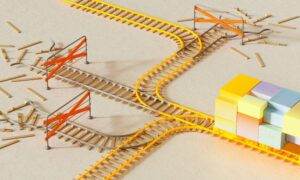THE HOMOSEXUALS’ BRAIN.
4 min read
What distinguishes the brain of a homosexual from that of a heterosexual? To find out more, let’s delve into the world of sexual dimorphism.
What is sex? What happens to our body when we fall in love? Are there any cerebral differences exist between males and females? Is it possible to identify some homosexual people from their brain? How romantic is actually the love we can feel for another person? In this new section we will try to clarify about complex themes and to investigate them fully in the clearest way possible, in order to understand various enlightening and curious aspects. Almost all the content of this section has been taken from Professor Robert Sapolsky’s university classes, with some integrations from university and informative texts.
Sexual dimorphism in homosexual people.
As we learned in the previous episode, in men and women different brain’s areas are activated when feeling attraction. But the two sexes, or even better, the two genders are different even for some structural components of the brain. These differences are gathered in the sphere of what is defined as sexual dimorphism, which includes morphological differences between members of the same species but of opposite gender.
In general, it is possible to affirm that a brain truly unisex does not exist. During the first eight weeks after conception, the foetal brain takes the shape of a female brain. After these eight weeks, the foetal male brain will be flooded with testosterone, which will stimulate the growth of sex-related cerebral centres within the hypothalamus. These structures also exist in the female brain, but their dimension is halved in comparison with men’s. If the foetus becomes a female individual, instead, cerebral connections related to communication and emotion processing will be strengthened and enlarged.
Homosexuals and INAH-3…
The peculiarities of the men and women’s brain are preserved till death. There are differences in the dimensions of the nucleus, in the number of axons flowing in a bundle of fibres, but the most substantial difference is in a group of small nuclei in the hypothalamus, called INAH-3 (Interstitial Nucleus of the Anterior Hypothalamus) that has a great influence on the sexual attitude of Rhesus monkeys.
The INAH-3’s dimensions are two times bigger in heterosexual men than women and homosexual men, that share almost the same dimension as women. The reason of such distinction is related to the greater grade of density of neural packing in homosexuals and heterosexual women than the others.
In other words, homosexual men and heterosexual women in this area have more neurones for a cubic centimetre, as such, the entire area is more “complex”. We take for granted that this has no intellectual consequence on individuals, and the entire staff take the distances from every discriminatory attitude in that way. What changes is exclusively the spatial distribution of neurons. It is possible to identify a person’s sex even just watching the dimension of the INAH-3 after this person’s death.
…And not only
Another brain area which dimensions depends on the gender is the bed nucleus of the stria terminalis, that is the point in which the amygdala starts sending his hormonal influx within the hypothalamus. Furthermore, some neurons and specific transmitters are strictly related to the sex: in men they are great twice than women and their dimension in homosexual men’s brain is the same of heterosexual women. Every consideration up to now is conversely valid to homosexual women: their brain has similarities to that of heterosexual men.
Transsexuality
Post-mortem observation of some transexual people has revealed that their neural dimension was more linked to that of the gender they felt to pertain, rather than their biological gender. It could be argued that, when a person starts a process of transition, it will be treated with a great quantity of hormones, that can influence some brain areas. This is formally correct, even though it has been studied that the differences among the neuronal dimensions are also present in transexual individuals that have not taken hormonal and biochemical treatments, and are dead by saying “this is not my gender, I was born in the wrong body but I have never performed the transition”. And this is an extraordinary discover!

Dottoressa triennale in Lingue per il Commercio. Ciò che più mi appassiona è lo studio di culture diverse dalla mia, nella consapevolezza che ciò possa portare ad una crescita personale. Sono convinta che tutte le arti e le singole culture debbano essere esaltate e valorizzate nella giusta misura







